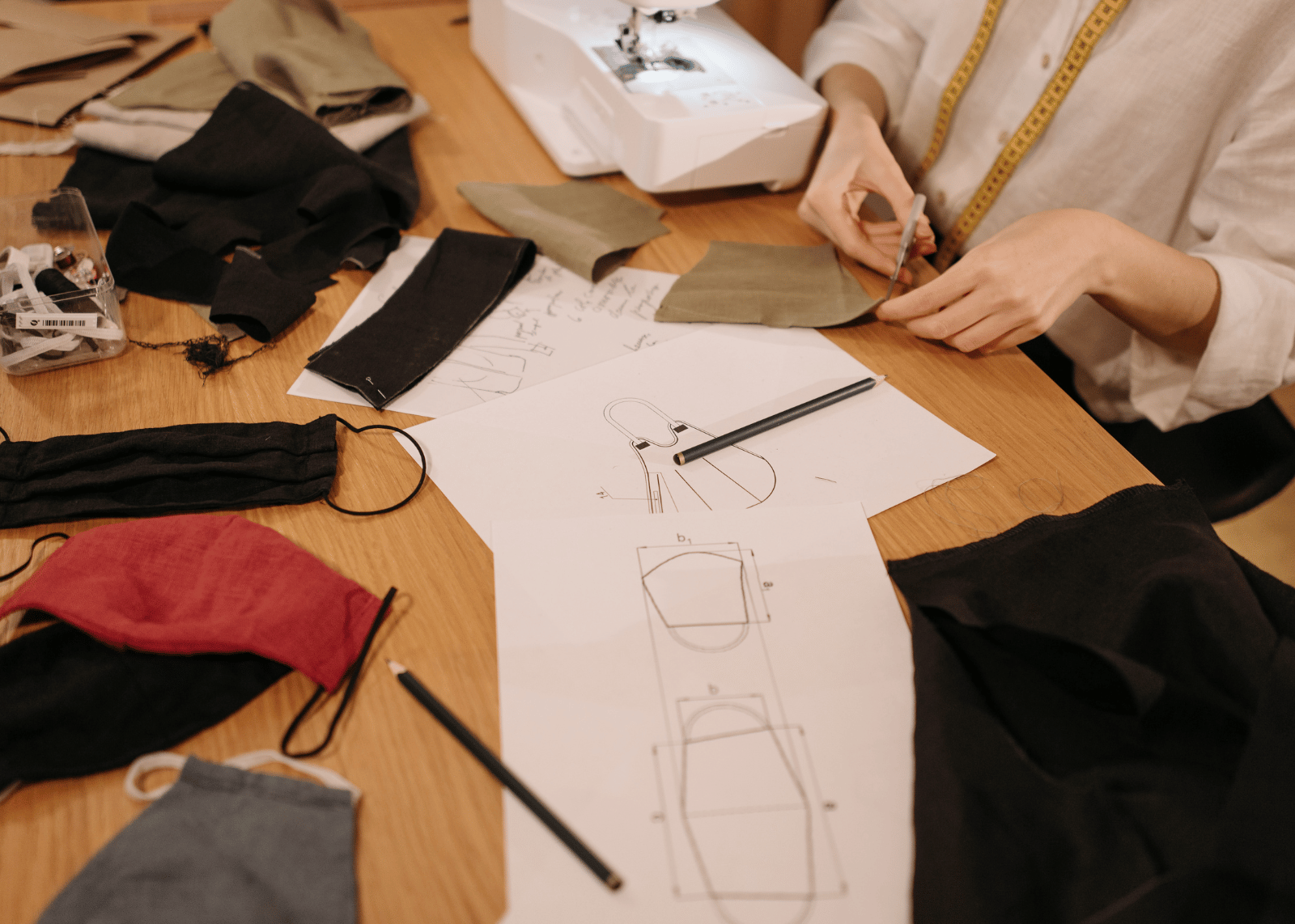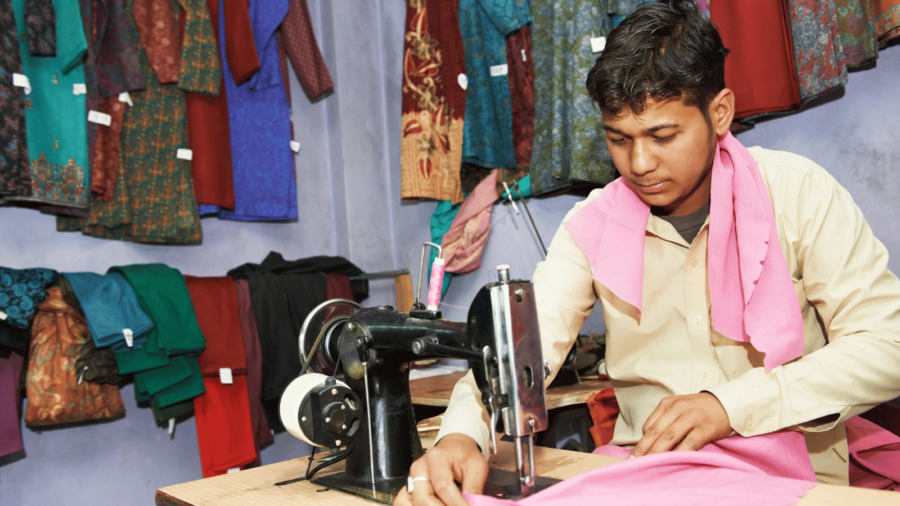A Tale of Indian Clothing Stitching Evolution
Once upon a time, in the heart of India, amidst vibrant colors and rich traditions, the art of stitching clothes began its journey. It was a time when every stitch told a story, and every fold held a secret. From the ancient civilizations of the Indus Valley to the Mughal courts, the evolution of Indian clothing stitching has been a tapestry woven with threads of innovation, tradition, and cultural identity.
In the beginning, Indian clothing was simple yet elegant, crafted from locally sourced fabrics like cotton, silk, and wool. The early stitchers, often women skilled in the art passed down through generations, employed techniques like hand-sewing, embroidery, and weaving to create intricate patterns and designs. Each region had its unique style of stitching, reflecting the diverse cultural tapestry of the subcontinent.
As time marched on, the influence of foreign invaders and traders brought new techniques and styles to Indian clothing stitching. The Mughals, with their love for opulence and grandeur, introduced elaborate embroidery, such as zardozi and chikankari, which adorned the royal garments of emperors and empresses. This fusion of Persian, Turkish, and Indian styles birthed a new era of sartorial splendor, blending the best of East and West.
The Mughal era stands as a golden period in the annals of Indian fashion, where the confluence of Persian, Turkish, and Indian influences birthed a new era of sartorial splendor. Among the most notable contributions of the Mughals to Indian clothing stitching were the introduction of exquisite embroidery techniques like zardozi and chikankari.
Zardozi, which translates to “gold embroidery,” is a labor-intensive technique that involves the use of metallic threads, sequins, and beads to create intricate designs on fabrics. Originating in Persia, it found its way to India during the Mughal period and quickly became synonymous with opulence and grandeur. Mughal emperors and empresses adorned their garments, tents, and even thrones with zardozi work, showcasing their wealth and power to the world.
Chikankari, on the other hand, is a delicate form of embroidery that originated in the Awadh region of present-day Uttar Pradesh. Inspired by Persian motifs and patterns, it was patronized by Mughal nobility and later became popular among the masses. Chikankari involves the use of white thread on sheer fabrics like muslin and organza, creating subtle yet intricate designs that epitomize elegance and sophistication.
The fusion of Persian, Turkish, and Indian styles during the Mughal era led to the emergence of a distinct aesthetic that blended the best of East and West. Mughal garments were characterized by rich fabrics like silk and brocade, embellished with elaborate embroidery and intricate patterns. The royal courts became a melting pot of cultures, where artisans from different backgrounds collaborated to create masterpieces that transcended boundaries of time and geography.
The legacy of Mughal-era stitching techniques continues to inspire contemporary Indian fashion designers, who pay homage to this rich heritage through their creations. From bridal couture to haute couture, zardozi and chikankari remain perennial favorites, adding a touch of timeless elegance to modern ensembles.
In essence, the influence of the Mughals on Indian clothing stitching cannot be overstated. Their love for opulence and grandeur, coupled with a penchant for innovation and creativity, paved the way for a new era of sartorial splendor that continues to captivate hearts and minds to this day.

The colonial era saw a shift in Indian clothing, as British influence brought tailored suits and structured garments to the forefront. However, the spirit of indigenous stitching remained resilient, adapting to the changing times while preserving its essence. The Khadi movement led by Mahatma Gandhi revitalized hand-spun and hand woven fabrics, promoting self-reliance and empowerment through clothing.
Post-independence, Indian fashion experienced a renaissance, with designers like Ritu Kumar, Sabyasachi Mukherjee, and Manish Malhotra showcasing the richness of Indian textiles on both national and international stages. Traditional stitching techniques were revitalized and reimagined, catering to modern tastes while honoring age-old traditions.
But perhaps the most significant revolution in Indian clothing stitching came with the advent of social media. Platforms like Instagram, Pinterest, and YouTube became virtual runways, where designers, artisans, and enthusiasts showcased their creations to a global audience. Influencers and fashion bloggers embraced Indian ethnic wear, blending it with contemporary styles and creating new trends overnight.
Amidst this digital frenzy, a new trend emerged – the rise of boutique culture. Boutiques, with their personalized service and curated collections, became the go-to destination for fashion-conscious individuals seeking unique and bespoke pieces. These small, independent stores celebrated the craftsmanship of local artisans, offering handcrafted garments that told a story of their own.
Today, boutique culture continues to thrive, bridging the gap between tradition and modernity in Indian clothing stitching. From quaint storefronts in bustling bazaars to chic online boutiques catering to a global clientele, these establishments play a pivotal role in preserving heritage techniques while embracing contemporary aesthetics.
In boutique studios, master tailors and skilled artisans work hand-in-hand, breathing life into fabrics with every cut and stitch. Each garment is a labor of love, meticulously crafted to perfection, with attention to detail that sets it apart from mass-produced clothing.
But beyond the tangible allure of boutique fashion lies a deeper connection to culture and community. These small-scale enterprises provide employment opportunities to local artisans, empowering them to showcase their talent on a global stage. Moreover, by championing sustainable practices and ethical sourcing, boutique owners contribute to the preservation of India’s rich textile heritage for future generations to cherish.
So, the next time you step into a boutique, remember that you’re not just purchasing a piece of clothing – you’re investing in a story, a tradition, and a legacy that spans centuries. From the humble beginnings of Indian clothing stitching to the bustling boutiques of today, the journey is a testament to the enduring allure of craftsmanship and creativity. And as long as there are needles, threads, and skilled hands to wield them, the story of Indian fashion will continue to evolve, weaving together the old and the new in a tapestry of timeless elegance.




